On my morning stroll, I heard the familiar sound: the soft chatter of a belted kingfisher as it darts over the river. I spend a lot of time along rivers, and belted kingfishers are always a welcome sight. They’re familiar birds, but how much do I really know about them?
Not as much as I think, it turns out.
That became clear as I read Marina Richie’s excellent new book, Halcyon Journey: In Search of the Belted Kingfisher. Richie spends seven seasons tracking and observing a pair of kingfishers. Many birders and anglers might feel like they know the kingfisher, but Richie reveals that for most of us, we have only a superficial understanding of these birds.
Natural history, and direct observation of nature, might seem a quaint if not downright outdated pursuit in the 21st century. And yet, there’s still so much we don’t know about nature. We can still gain new insights and understanding through observation. And our observations can, in turn, help scientists track larger trends.
This summer’s book selection may help you better appreciate nature, conservation history, current issues and more. I hope you enjoy them.
-
Halcyon Journey
By Marina Richie
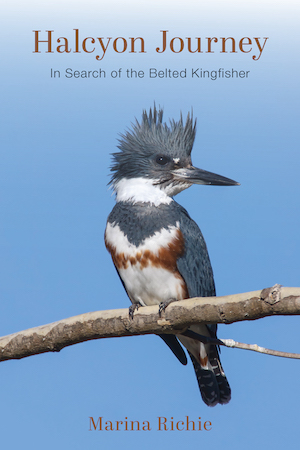
Richie’s desire to better understand the local kingfishers is a launching point for a deeper journey. Halcyon Journey weaves natural history observation, memoir and travelogue. As she observes the often-cryptic habits of a local pair of kingfishers, she also seeks to understand the kingfisher’s place in Indigenous culture as well as the bird’s role in myth. She travels to other locations to understand kingfishers and the issues they face.
Richie is a gifted storyteller, and the many threads weave together seamlessly. The result is what I describe as deep birding. It’s not the same as ticking species of birds for your life list (not that there’s anything wrong with that). Instead, it’s using observational skills to gain a deep understanding of one particular bird species – and in doing so, perhaps gain a better understanding of yourself.
The belted kingfisher is one of those birds that’s a crowd pleaser, even for non-birders. And you’ll like this noisy streamside resident even more after reading Richie’s lyrical book.
-
The Market in Birds
By Andrea L. Smalley with Henry M. Reeves

It’s a well-known bit of conservation history that efforts to address market hunting in North America led to wildlife legislation that essentially saved many species from extinction. But, as with so much history, market hunting is often covered superficially. And much of it focuses on the bison slaughter.
The Market in Birds presents an insightful, exhaustive look at how industrialization led to rapid commercial exploitation of many bird species during the late 19th century. This in turn resulted in a conservation movement that fundamentally changed the way we value wildlife.
Historian Andrea Smalley builds on the research of the late Henry Reeves, who served as chief of migratory bird management for the U.S. Fish and Wildlife Service. The resulting book approaches the commercial bird market from every conceivable angle. Many conservation histories focus exclusively on the market hunters, often presenting them as either romanticized frontier characters or villains. This book takes a much more nuanced approach, using primary source material.
And it shows that these market hunters weren’t acting in a vacuum. It’s difficult to conceive now, but nearly every urban market and restaurant in the late 19th century would have an extensive list of birds on the menu. The industry relied on game dealers, restaurant owners and consumers, all covered in this book. It was also at odds with a growing leisure class who enjoyed sport hunting and those who valued birds for their own sake.
For any student of conservation history, this is a must read. It’s thorough and original, and will help to better understand present-day North American wildlife conservation and the challenges it faces.
-
Wilted Wings
By Mike McTee
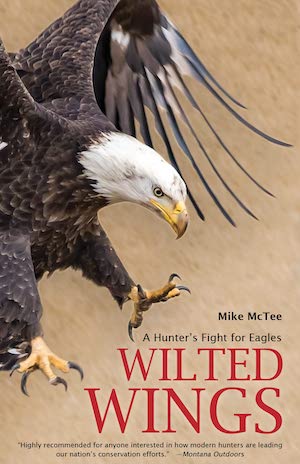
Sport hunters play a key role in ending the industrial-level killing of wildlife in the late 19th century. Can hunters continue to be leaders in wildlife conservation. I’m a hunter, and I admit I have my doubts. And key evidence for me is the resistance (if not downright hostility) of hunters towards efforts to shift from lead ammunition to less toxic alternatives.
Lead ammunition not only kills the legal quarry hunters pursue. When the hunter leaves behind the entrails (or “gut pile”) of a deer or elk, those fragments are consumed by scavengers, including birds of prey. This has turned into a major conservation issue facing bald and golden eagles, California condors and other raptors.
Mike McTee – a hunter, shooter and environmental chemist – has written the book we need about this issue. Working at the MPG Ranch in Montana, he has studied and seen firsthand the impact of lead ammunition on golden eagles and other species. This book can be heartbreaking as it traces raptor rehabilitator’s efforts to save golden eagles exposed to lead poisoning. The science is clear, as McTee so thoroughly covers. Lead ammunition in the field has numerous negative impacts. But will hunters change?
There’s much to love about this book, but most of all I appreciate that it is not preachy or judgmental. McTee is an optimist, and he believes that if hunters recognize the impacts they’re having, they will change on their own. I often feel a bit of despair over this issue…it seems like it should be easily solved but instead becomes unnecessarily controversial.
I wish I could put McTee’s book in the hands of every hunter and bird conservationist. It’s an important and compelling read.
-
The Hawk’s Way
By Sy Montgomery
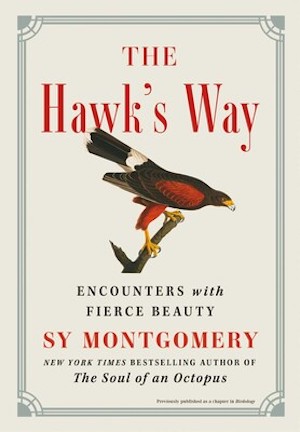
Sy Montgomery is a deservedly well-known author of animal books, often combining a blend of first-person storytelling with biology and conservation. She’s also a vegetarian who is notable for seeing animals as unique individuals.
So it might be a bit of a surprise when she takes up falconry, the practice of using birds of prey for hunting. As Montgomery puts it, to deny a hawk its hunting is to deny its being. A falconer does not train a raptor nor is the raptor even a hunting partner. To become a falconer is to submit to the bird of prey, to see the world through its superior eyes and senses.
Falconry is a rich vein for writers to tap, and I’ve read a lot of falconry books. This concise entry (it previously appeared in different form as part of a longer work) is a worthy edition to falconry literature. I recently had the chance to discuss the topic at length with Sy Montgomery, so look for a longer feature on this topic soon.
-
The Skies Above
By Dennis Mersereau
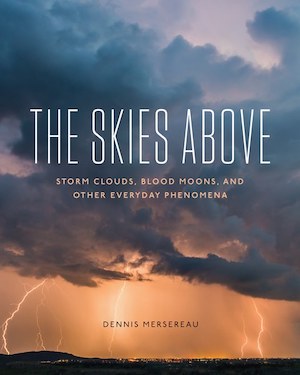
I like to think I’m a keen observer of the natural world, but I also have to admit that most of my attention is on the living part of that world, the animals and plants and fungi. But of course, there’s a lot more to observe, and increasingly, I find myself stargazing and also watching how weather patterns affect wildlife.
The Skies Above is really the guide I need, a fun and readable overview of what we can observe by looking up. It covers everyday weather, major meteorological phenomena and astronomy. It’s a comprehensive go-to guide, perfect for a summer evening or camping trip.
You’ll learn the basics of cloud spotting, star constellations, moon phases and storm patterns. Mersereau, a weather writer with an academic background in meteorology, covers just about any topic you could conceive, from the shapes of snowflakes to the paths of meteors. You’ll learn about rain drops and tornadoes, optical oddities like haloes and the different kinds of fog.
I’ll keep this on a shelf with my other treasured field guides and refer to it often.
-
A Solitude of Wolverines
By Alice Henderson

I’ve been binging on mysteries and thrillers lately; they’re like my reading version of comfort food. It’s a bonus if the stories include realistic nature or conservation elements, like the series by Paul Doiron, Charles Fergus and Nevada Barr. I’ll now be adding Alice Henderson’s Alex Carter mysteries to this list.
A Solitude of Wolverines is the first in this series, focused on wildlife biologist Alex Carter. Unlike some outdoor mysteries, where wilderness settings just provide novel backdrops for the action, A Solitude of Wolverines focuses on wildlife biology and conservation issues. The daily delights and frustrations of field work are central to the plot.
Carter, the protagonist, revels in a new assignment to camera trap wolverines in the Montana wilderness. But she soon finds evidence that something sinister is going on in the seemingly peaceful wilds around her. Soon the thrill of tracking rare wildlife becomes intertwined with a genuinely horrific and grisly criminal enterprise, and Carter must rely on her field skills to solve it (and save herself). Like many modern thrillers, this novel is not for the squeamish. It’s a page-turner that’s at times terrifying. As a fan of the genre, I’ll look forward to continuing with this series.
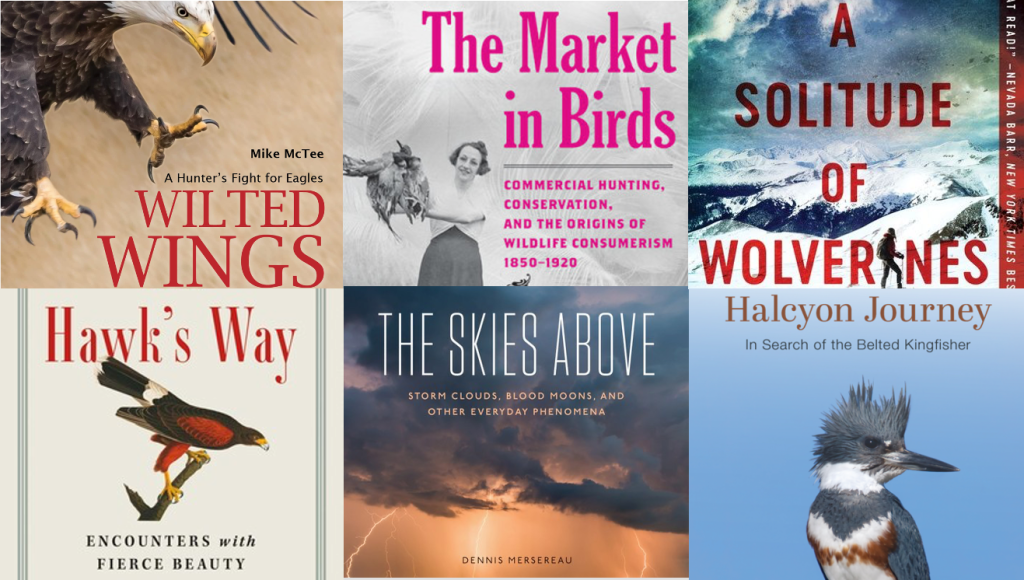



Nevada Barr is valuable in educating the readers addicted to “who-dun-its.” And she’s apparently good at it! Thanks for the review!
Summer is the perfect time to binge on mysteries. I like the comfort food analogy.
I’m going to have to check out Alice Henderson. Once you mentioned Paul Doiron it sealed the deal.
I wonder if hunters would be open to Wilted Wings if it were sold in hunting type stores (Cabela’s, Bass Pro shops and smaller mom and pop stores). How can we make that happen? Even more importantly how do we get it into the hands of state & federal legislators?
Hi Linda,
Thanks for your comment. I like the idea but suspect most hunting stores would not carry this book. The hunting industry has been extremely vocal against any regulation of lead ammunition. In fact, on several instances, when I have asked for non-toxic copper ammunition in sporting goods stores, I have had the employees try to dissuade me from buying it. It is really unfortunate.
Matt Miller
Cool Green Science editor